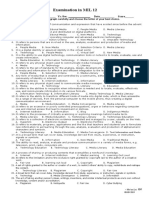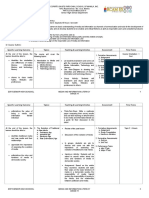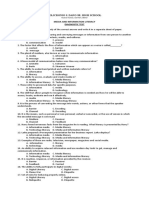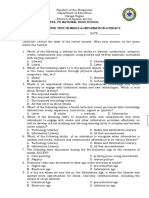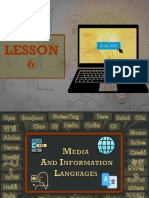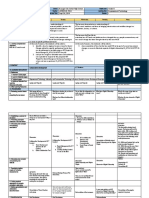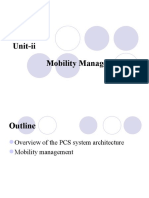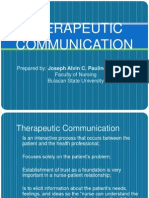0 ratings0% found this document useful (0 votes)
137 viewsMIL Midterm - Print
MIL Midterm - Print
Uploaded by
Loreen RoaCopyright:
© All Rights Reserved
Available Formats
Download as PDF, TXT or read online from Scribd
MIL Midterm - Print
MIL Midterm - Print
Uploaded by
Loreen Roa0 ratings0% found this document useful (0 votes)
137 views4 pagesCopyright
© © All Rights Reserved
Available Formats
PDF, TXT or read online from Scribd
Share this document
Did you find this document useful?
Is this content inappropriate?
Copyright:
© All Rights Reserved
Available Formats
Download as PDF, TXT or read online from Scribd
Download as pdf or txt
0 ratings0% found this document useful (0 votes)
137 views4 pagesMIL Midterm - Print
MIL Midterm - Print
Uploaded by
Loreen RoaCopyright:
© All Rights Reserved
Available Formats
Download as PDF, TXT or read online from Scribd
Download as pdf or txt
You are on page 1of 4
BAYUGAN CITY SENIOR HIGH SCHOOL
Fili, Bayugan City, Agusan del Sur
S.Y 2022-2023
MEDIA AND INFORMATION LITERACY
Midterm
Directions: Read and understand the questions carefully. Shade the letter of the correct answer
on the given answer sheet.
1. What is the ability to access, analyze, evaluate, and create media?
a. Media b. Media Literacy c. Information Literacy d. Technology Literacy
2. What is the skill that allows a person to recognize when information is needed and how
he/she will be able to access, locate, evaluate, and use it effectively?
a. Media Literacy c. Technology Literacy
b. Information Literacy d. Media & Information Literacy
3. Which ability that acquire relevant information and use modern-day tools to get, manage
and communicate information?
a. Media Literacy c. Technology Literacy
b. Information Literacy d. Media & Information Literacy
4. What is the origin Latin word of communication which means “to share” or “to divide
out”?
a. commus b. communis c. communare d. communicare
5. Which communication process that the message sent and received are open to various
interpretations based on the context of the receiver?
a. Publicity model c. Transmission model
b. Reception model d. Ritual or expressive model
6. What is the most dominant sense was used during the literacy age?
a. Hearing b. Sight c. Touch d. Smell
7. Which type media that have a high level of user interactivity, that make the user
experience dynamic such as video game and social media?
a. Hot media b. Warm media c. Cold media d. New media
8. What is the society’s current era in the evolution of media?
a. Print age b. Electronic age c. Information age d. Infrastructure age
9. Why must the government have the power over the press?
a. To show who has the authority.
b. To maintain peace and security in the nation.
c. To prevent people threats and rebellious ideas.
d. To stop the opinions that was against the government.
10. What happen to the generation who were become more dependent on technology
especially in social media?
a. They’ve have lost their manners.
b. They’ve have grown to be more isolated.
c. They’ve became too dependent of using emoji.
d. They’ve become extremely expressive of their thoughts.
11. In creating research paper, what is the most common category of information that being
used?
a. Current b. Historical c. Popular d. Scholarly
12. Which of the following is NOT an example of currency information?
a. Weather b. Money currency c. Stock Market d. Social Science books
13. What is the synonym of information seeking?
a. Google b. Research c. Surfing the internet d. Finding sources
14. How to determine if the information is stable?
It can be determine by the following questions:
I. Is it needed?
II. Is it updated?
III. Has it been around for a long time?
IV. Is the site associated with a reputable institution?
a. I, II, III b. I, III, IV c. I, II, IV d. II, III, IV
15. How to evaluate the “potential value of an information”?
a. Understanding how to utilize a variety of information sources.
b. Organizes new information meaningful ways to determine the gaps.
c. Identifying information and assess its reliability, bias, authority, and intent.
d. All of the above
16. What do you call the practice where user presenting ideas from another source as their
own, without the consent of the original author by incorporating it into their work without
the full acknowledgement?
a. Copyright b. Plagiarism c. Fair use d. Copy + Paste
17. Because of television, radio was a success in most parts of the world.
a. True b. False
18. FM can be defined as Format Modulation.
a. True b. False
19. Synergy is the combination of various elements to create a new whole.
a. True b. False
20. Convergence is an interaction of two or more agents or forces so that their combined
effect is greater than the sum of their individual effects.
a. True b. False
21. Which type of media that the people involved in the use, analysis evaluation, and
production of media and information?
a. Media b Multimedia c. People media d. Indigenous media
22. Which type of media that is created and controlled in the community, about the
community and by the community?
a. Media b Multimedia c. People media d. Indigenous media
23. The AIPP observed that “ASEAN media landscape is generally characterized by an urban
– centric media system in flow, content, consumption and ownership that limits
indigenous peoples’ access to media. What is AIPP means?
a. Asia Indigenous Peoples Pact c. Asia Indigent Peoples Pact
b. Asia Indigenous People Power d. Asia Indigent Peoples Power
24. How to measure information quality?
I. Credible and reliable III. It was cross – referenced.
II. Breadth and depth of the discussion IV. The source is ethical and legal
a. I, II, III b. II, III, IV c. I, III, IV d. I, II, III, IV
25. Which of the is the PRO of social media?
a. Do not capture tone.
b. Give voice to timid people.
c. Time consuming to engage directly with followers.
d. Mistakes can happen in real time with thousands of witnesses.
26. What is the system or collection of signs that create meaning when put together?
a. Codes b. Genre c. Information d. Language
27. What media messages that you are exposed with an intention example, news report and
film?
a. Communication c. Code intention
b. Communicative purpose d. Media and Information Language
28. What are the storytelling devices that have figures of speech that audiences recognize too
easily because of their occurrences in almost all programs under the genre?
a. Codes b. Convention c. Genre d. Tropes
29. What is the current trend of technology as of today (2023)?
a. Robots b. Sophia c. AI Chatbot d. Smart Sunglasses
30. Which of the following is an example of Mass media codes?
a. Drama b. Film c. Narrative d. Sculpture
31. What is the global forum for intellectual property services, policy, information, and
cooperation?
a. Patent c. Intellectual Property
b. Copyright d. World Intellectual Property Organization
32. The author is entitled to a right under copyright law, in which he/she will be properly
compensated financially upon his/her permission for the work to be used by another?
a. Right to live c. Moral Rights
b. Equal Rights d. Economic Rights
33. Which of the following does NOT cover the Republic Act 8293?
a. Layout designs c. Government official text
b. Industrial designs d. Trademarks and service marks
34. Taylor posted series of displeasing snapshot of Joe showing how jerk he is. Joe
responded the post with direct criticism to Taylor on twitter. What do you call this kind
activity?
a. Flame b. War c. Flame War d. Online Rambulan
35. Ariana Grade and Selena Gomez were victim of online bashing due to their weight and
physical appearance changes, that they needed to explain their side on social media. As a
responsible netizen possessing netiquette, what is the best proper way to respond the
situation?
a. Ask what happen?
b. Ignore the changes of the celebrity and continue scrolling.
c. Fight anyone who wrote negative comments against them.
d. Show your continuous support for them by commenting positive words.
36. Department of Justice defined “a crime committed with or through the use of information and
communication technologies such as radio, television, cellular phone, computer and network, and
other communication device or application”, what do they mean by this?
a. Phishing b. Plagiarism c. Cybercrime d. Cyberbullying
37. What Republic Act entitled “Anti-photo Voyeurism Act pf 2009”?
a. Republic Act No. 8484 c. Republic Act No. 9775
b. Republic Act No. 9208 d. Republic Act No. 9995
38. Which of the following is the goal of Meaning Matching?
a. Referents in messages
b. To access previously learned meanings efficiently.
c. To use basic competencies to recognize referents and locale previously learned definitions for
each information.
d. All of the above
39. The potential for connection is constantly expanding. What kind of media is responsible for
information distribution and broader social relationships? Additionally, it significantly altered
how content is accessed, distributed, and presented across generations.
a. Content Communities c. Collaborative Projects
b. Social Networking Sites d. Virtual Game Worlds
40. Why are audiences expected to filter the messages they receive?
a. To use biased, incomplete, or even false messages.
b. To only determine what is valuable and what is not.
c. To only use the accurate and objective out of the vast information available on the internet.
d. To ensure to get the most accurate and relevant information and to protect themselves from
being misled or misinformed.
41. Which of the following is NOT an example of wearable technology?
a. Smart phone c. Smart watch
b. Smart glasses d. Hearing Aid
42. MOOC is a model for delivering learning content only to any person who wants to take a course,
with no limit on attendance. What does MOOC stand for?
a. Massive Open Online Course c. Madly Overwhelmed Outcast Classmate
b. Massive Outdoor Online Course d. Maintenance and Other Operating Challenges
43. Which of the following is a DISADVANTAGE of Open Educational Resources (OER)?
a. Accessible c. Up – to – date
b. Cost – effective d. Collaborative in answering worksheets
44. How do developments in media and information technology change the way of life of humans?
a. It makes people can communicate with each other more easily and frequently.
b. It has democratized knowledge and has made education and learning more accessible to
people around the world.
c. This has improved access to healthcare for people in remote or underserved areas and has
made medical care more convenient and efficient.
d. Advances in technology have enabled more people to work remotely, which has given rise to
a new class of digital nomads and remote workers.
e. All of the above
45. How are wikis helpful as references/ resources?
a. Constantly updated because wikis are editable by anyone.
b. Collaborative knowledge that anyone can edit and post information.
c. Wikipedia are free and open to access for anyone with an internet connection.
d. Wikis often contain hyperlinks to related articles, which can help readers to navigate to
additional sources of information quickly and easily on a particular topic.
46. What kind of person possess the knowledge, the attitudes, and the sum of the skills needed to know
when and what information is needed; where and how to obtain that information; how to evaluate
it critically and organize it once it is found; and how to use it in an ethical way?
a. Literate Individual c. Information Literature Individual
b. Media Literate Individual d. Media and Information Literate Individual
47. How the concept of “beauty” and “image” in media affect the perspective of the teenagers?
I. Media often promotes a narrow and unrealistic standard of beauty that can be damaging
to young people's self-esteem and body image.
II. Teenagers who do not fit the mold may feel ostracized or ashamed of their appearance,
which can lead to a host of negative consequences, including eating disorders,
depression, and low self-esteem.
III. Encouraging critical thinking skills and promoting positive body image and self-esteem
can help teenagers navigate the complex messages.
IV. They may develop biases and prejudices based on the appearance of others, which can
affect their relationships and interactions with people.
a. I, II, III b. I, II, IV c. II, III, IV d. III, IV, I
48. How media injects ideologies to netizens?
I. Media can set the agenda by highlighting certain issues or topics more frequently than
others, which can shape netizens' perceptions and priorities.
II. Media can frame an issue or event in a particular way that can influence how netizens
understand it.
III. Media can use propaganda techniques to promote a particular ideology or agenda.
IV. Social media influencers, who have large followings on platforms like Instagram,
Twitter, and TikTok, can also inject ideologies into netizens.
a. I b. I, II c. I, II, III d. I, II, III, IV
49. How the concept of “beauty” and “image” in media affect the perspective of the teenagers?
V. Media often promotes a narrow and unrealistic standard of beauty that can be damaging
to young people's self-esteem and body image.
VI. Teenagers who do not fit the mold may feel ostracized or ashamed of their appearance,
which can lead to a host of negative consequences, including eating disorders,
depression, and low self-esteem.
VII. Encouraging critical thinking skills and promoting positive body image and self-esteem
can help teenagers navigate the complex messages.
VIII. They may develop biases and prejudices based on the appearance of others, which can
affect their relationships and interactions with people.
b. I, II, III b. I, II, IV c. II, III, IV d. III, IV, I
50. How media injects ideologies to netizens?
V. Media can set the agenda by highlighting certain issues or topics more frequently than
others, which can shape netizens' perceptions and priorities.
VI. Media can frame an issue or event in a particular way that can influence how netizens
understand it.
VII. Media can use propaganda techniques to promote a particular ideology or agenda.
VIII. Social media influencers, who have large followings on platforms like Instagram,
Twitter, and TikTok, can also inject ideologies into netizens.
b. I b. I, II c. I, II, III d. I, II, III, IV
You might also like
- Duolingo SpeakingDocument7 pagesDuolingo SpeakingAlex100% (3)
- Media and Information Literacy Teaching GuideDocument5 pagesMedia and Information Literacy Teaching GuideShin Neul100% (1)
- Learning Activity Sheet Media Information Literacy-Senior High SchoolDocument9 pagesLearning Activity Sheet Media Information Literacy-Senior High SchoolMark Christian BrlNo ratings yet
- General Instruction: Please Avoid Erasures Any Form of Erasures Are Not CountedDocument4 pagesGeneral Instruction: Please Avoid Erasures Any Form of Erasures Are Not CountedCherrina AguilaNo ratings yet
- Observation Template Word FormatDocument5 pagesObservation Template Word Formatapi-195266051No ratings yet
- 4th Summative-2Document5 pages4th Summative-2Loreen RoaNo ratings yet
- 4th SummativeDocument7 pages4th SummativeLoreen Roa100% (1)
- MIL 1Q ExaminationDocument4 pagesMIL 1Q ExaminationMaria Rizza LuchavezNo ratings yet
- Name: - Date: - Grade & Section: - Teacher: Nhel Anthony P. DerechoDocument2 pagesName: - Date: - Grade & Section: - Teacher: Nhel Anthony P. DerechoNhel Anthony DerechoNo ratings yet
- Media and Information LiteracyDocument4 pagesMedia and Information LiteracyAnna Marie Agravante100% (1)
- 3rd QUARTER EXAMINATION (Media and Information Literacy)Document6 pages3rd QUARTER EXAMINATION (Media and Information Literacy)Frances DolleroNo ratings yet
- A. Content Standards B. Performance Standards C. Learning Competencies/ObjectivesDocument2 pagesA. Content Standards B. Performance Standards C. Learning Competencies/ObjectivesPrecious Ro-AnNo ratings yet
- Examination in MIL 12: Name: - Yr./Sec. - Date - ScoreDocument2 pagesExamination in MIL 12: Name: - Yr./Sec. - Date - ScoreRenen Millo BantilloNo ratings yet
- Q1 MIL Revised M1 Week-1Document17 pagesQ1 MIL Revised M1 Week-1Awrey CutieNo ratings yet
- MIL Quarter 1 Module 2Document12 pagesMIL Quarter 1 Module 2Mikhaila Fernandez100% (1)
- SHS-CourseSyllabusMIL 1st SemDocument12 pagesSHS-CourseSyllabusMIL 1st SemFujimoto Miyako83% (6)
- Mil DLL Lesson 5Document3 pagesMil DLL Lesson 5Glenda QuinzonNo ratings yet
- Republic of The Philippines Department of EducationDocument3 pagesRepublic of The Philippines Department of EducationTeachSir Ree MinYuNo ratings yet
- Module 3 Responsible User of Media and InformationDocument17 pagesModule 3 Responsible User of Media and InformationAngelo BacalsoNo ratings yet
- Independent Learning: Activity Sheets in Media and Information Literacy Grade12 Quarter 4 - Week No. 4Document4 pagesIndependent Learning: Activity Sheets in Media and Information Literacy Grade12 Quarter 4 - Week No. 4Messy SphereNo ratings yet
- Detailed-Lesson-Plan - MilDocument3 pagesDetailed-Lesson-Plan - MilkaryawarxNo ratings yet
- Summative Test 1: Marcelo I. Cabrera Vocational High School G12-Media and Information LiteracyDocument12 pagesSummative Test 1: Marcelo I. Cabrera Vocational High School G12-Media and Information LiteracyGeriza Joy Rico100% (2)
- Semi-Detailed Lesson Plan in MIL (Text Media and Information)Document6 pagesSemi-Detailed Lesson Plan in MIL (Text Media and Information)nos87No ratings yet
- MIL Midterm Exam With Answer Key 2022 2023Document3 pagesMIL Midterm Exam With Answer Key 2022 2023Norelie Lutang100% (1)
- Media and Information LiteracyDocument2 pagesMedia and Information Literacyclay adrian100% (3)
- MIL - Quiz 1Document2 pagesMIL - Quiz 1Ere Lyne BautistaNo ratings yet
- Review QuestionsDocument35 pagesReview QuestionsNoel Butawan CabañaNo ratings yet
- 1 Semester Summative Assessment 1 Quarter Period Module 5-6Document3 pages1 Semester Summative Assessment 1 Quarter Period Module 5-6Eula ManuelNo ratings yet
- Mil DLP CoDocument3 pagesMil DLP CoJORDE ITHURIEL RAÑANo ratings yet
- MIL Q2 Week 1 Lesson 1Document26 pagesMIL Q2 Week 1 Lesson 1Shylan100% (1)
- Long Quiz MIL - Module 2Document1 pageLong Quiz MIL - Module 2Imie Omamalin GuisehanNo ratings yet
- Test 2Document2 pagesTest 2Jose Nilo PastorallNo ratings yet
- COT 1-MIL-Jeneth ReyesDocument8 pagesCOT 1-MIL-Jeneth ReyesNeth ReyesNo ratings yet
- MIL 12 SummativeDocument2 pagesMIL 12 SummativeJarven SaguinNo ratings yet
- DLL Lesson Week 1 Media and Information LiteracyDocument5 pagesDLL Lesson Week 1 Media and Information LiteracyMark Christian Rabago AlcantaraNo ratings yet
- Final Exam MilDocument2 pagesFinal Exam MilKristi MadanloNo ratings yet
- Mil - WLP - Week 6Document13 pagesMil - WLP - Week 6LOUIE DEL MUNDONo ratings yet
- MIL Diagnostic TestDocument3 pagesMIL Diagnostic TestNiño Jessie Val LupianNo ratings yet
- Midterm MILDocument4 pagesMidterm MILJose Marie Carcueva AvilaNo ratings yet
- IP8-DLP-MILQ2-LC8 Visual Information and Media Which Are Formally and Informally Produced, Organized and DisseminatedDocument10 pagesIP8-DLP-MILQ2-LC8 Visual Information and Media Which Are Formally and Informally Produced, Organized and Disseminatednatalie dibdibNo ratings yet
- Legal, Ethical, and Societal Issues in Media and Information Literacy (Lab) ACTIVITYDocument4 pagesLegal, Ethical, and Societal Issues in Media and Information Literacy (Lab) ACTIVITYRogelio HayagNo ratings yet
- MIL DLL August 19 - 22, 2019 Grade 12Document5 pagesMIL DLL August 19 - 22, 2019 Grade 12Chekahay ni 'Cher Ojie ug 'Cher Alven DiazNo ratings yet
- NAT Mock MILDocument5 pagesNAT Mock MILKobe PayawalNo ratings yet
- DLL MILDocument3 pagesDLL MILNESTOR PAUL PINGILNo ratings yet
- Quarter 2 - Module 9: Multimedia Information and MediaDocument27 pagesQuarter 2 - Module 9: Multimedia Information and MediaEditha FernandezNo ratings yet
- FIRST SUMMATIVE TEST IN MEDIA First QuarterDocument2 pagesFIRST SUMMATIVE TEST IN MEDIA First QuarterRhaieyee ElNo ratings yet
- MIL 1st Week ExemplarDocument4 pagesMIL 1st Week ExemplarRickely BantaNo ratings yet
- Detailed Lesson Plan in MilDocument5 pagesDetailed Lesson Plan in MilJingle CamotesNo ratings yet
- DLP Week 2 MILDocument10 pagesDLP Week 2 MILReniel VillaverdeNo ratings yet
- Lesson Plan in Media and Information Literacy-For Demo 2021-Final For SubmissionDocument3 pagesLesson Plan in Media and Information Literacy-For Demo 2021-Final For SubmissionDel Rose-Almomento NishidaNo ratings yet
- 4th DLL WeekdDocument2 pages4th DLL WeekdAnonymous WvQ6ZkDWWENo ratings yet
- Midterm Exam SY 2022-2023 in MILDocument3 pagesMidterm Exam SY 2022-2023 in MILLicht 2.0No ratings yet
- Module 6 MilDocument39 pagesModule 6 MilAnn EstrellaNo ratings yet
- Summative Exam MilDocument6 pagesSummative Exam MilEdward Almazan100% (2)
- Exam Q4 Media and Information LiteracyDocument2 pagesExam Q4 Media and Information LiteracyCK Cortel JrNo ratings yet
- All Sections of Grade 12-Core SubjectDocument5 pagesAll Sections of Grade 12-Core SubjectEverdina GiltendezNo ratings yet
- Lesson 7 People Media MILDocument12 pagesLesson 7 People Media MILMariane CarandangNo ratings yet
- Mil 1Document3 pagesMil 1rosalyn100% (2)
- What Is Information LiteracyDocument21 pagesWhat Is Information LiteracyFely DanaoNo ratings yet
- First Periodical TestDocument6 pagesFirst Periodical TestJeffrey ManligotNo ratings yet
- Sinait National High School: Department of Education Region I Division of Ilocos Sur Senior High SchoolDocument2 pagesSinait National High School: Department of Education Region I Division of Ilocos Sur Senior High SchoolFrances Bea Ibañez100% (1)
- 3rd Quarter Exam in Media and Information LiteracyDocument2 pages3rd Quarter Exam in Media and Information LiteracyWilson Dela Cruz100% (4)
- Q3.week 3-4Document3 pagesQ3.week 3-4Loreen RoaNo ratings yet
- Q3.week 1-2Document2 pagesQ3.week 1-2Loreen RoaNo ratings yet
- DAILY LESSON LOG OF M11GM-Ib-3 (Week Two-Day Three)Document3 pagesDAILY LESSON LOG OF M11GM-Ib-3 (Week Two-Day Three)Loreen RoaNo ratings yet
- Q3.week 5-6Document4 pagesQ3.week 5-6Loreen RoaNo ratings yet
- 14-Sept 2-6, Emp TechDocument3 pages14-Sept 2-6, Emp TechLoreen RoaNo ratings yet
- 13-Aug 26-30, Emp TechDocument3 pages13-Aug 26-30, Emp TechLoreen RoaNo ratings yet
- EmTech C1L4Document11 pagesEmTech C1L4Loreen RoaNo ratings yet
- 4th Summative - 3Document2 pages4th Summative - 3Loreen RoaNo ratings yet
- EmTech C2L1Document9 pagesEmTech C2L1Loreen RoaNo ratings yet
- Commonwealth BroadcastingDocument43 pagesCommonwealth BroadcastingGrace OlajideNo ratings yet
- NicoleDocument1 pageNicoleapi-341337144No ratings yet
- AhDocument21 pagesAhDee EdNo ratings yet
- Modal Verbs in Fast SpeechDocument2 pagesModal Verbs in Fast SpeechbobNo ratings yet
- 9e9903a8-3feb-42ef-999e-ca9bfc7aa3bdDocument3 pages9e9903a8-3feb-42ef-999e-ca9bfc7aa3bdIness KyapwanyamaNo ratings yet
- College Information Chat-Bot Project ReportDocument14 pagesCollege Information Chat-Bot Project ReportJitendraNo ratings yet
- Lesson 5Document30 pagesLesson 5Fuo NienNo ratings yet
- Reading Lesson Plan PortfolioDocument3 pagesReading Lesson Plan Portfolioapi-543319841No ratings yet
- 1.whatsapp MarketingDocument17 pages1.whatsapp Marketingstephensonstephanie5No ratings yet
- The Effects of Blended Learning To The Academic Performance of Grade 12 TVL Students of SMSHSDocument14 pagesThe Effects of Blended Learning To The Academic Performance of Grade 12 TVL Students of SMSHSEmprezia Nicole Dela CruzNo ratings yet
- Kick Starting Total CommunicationDocument3 pagesKick Starting Total CommunicationSpeech & Language Therapy in PracticeNo ratings yet
- Paraphrasing For ComprehensionDocument2 pagesParaphrasing For ComprehensionEmilio GuerreroNo ratings yet
- Communication Skills 3Document4 pagesCommunication Skills 3Loolik SoliNo ratings yet
- Lecture 4-CyberstalkingDocument21 pagesLecture 4-CyberstalkingTing Zhi Peng (Ethan)No ratings yet
- Unit-Ii Mobility ManagementDocument65 pagesUnit-Ii Mobility ManagementvickyNo ratings yet
- Dominos Pizza CrisisDocument10 pagesDominos Pizza CrisisRahul SoniNo ratings yet
- Atestat La Limba EnglezăDocument27 pagesAtestat La Limba EnglezăKarina ManNo ratings yet
- Therapeutic CommunicationDocument19 pagesTherapeutic CommunicationMary Grace Mas0% (1)
- Marco Grasso - Portfolio 2020Document28 pagesMarco Grasso - Portfolio 2020Marco GrassoNo ratings yet
- SOW Form 4 2017Document8 pagesSOW Form 4 2017ismarizalNo ratings yet
- Colgate vs. Close-Up: A Comparative Study On The Best Brand of Toothpaste in The PhilippinesDocument4 pagesColgate vs. Close-Up: A Comparative Study On The Best Brand of Toothpaste in The PhilippinesJocelNo ratings yet
- Dunning Kruger EffectDocument1 pageDunning Kruger EffectAndrew Richard ThompsonNo ratings yet
- Wael ArakjiDocument8 pagesWael ArakjiAdnan YassineNo ratings yet
- Lesson 2 Fashion Unit Clothing StoriesDocument4 pagesLesson 2 Fashion Unit Clothing Storiesapi-434051929No ratings yet
- Content Marketing BlueprintDocument34 pagesContent Marketing BlueprintJosué Gomes100% (1)
- Reading Lesson Project 2Document3 pagesReading Lesson Project 2api-208596521No ratings yet
- Circle MapDocument2 pagesCircle MapJaSon YkNo ratings yet
- Our Lady of Fatima University: Senior High School Department Antipolo City CampusDocument3 pagesOur Lady of Fatima University: Senior High School Department Antipolo City CampusRc CokeNo ratings yet












